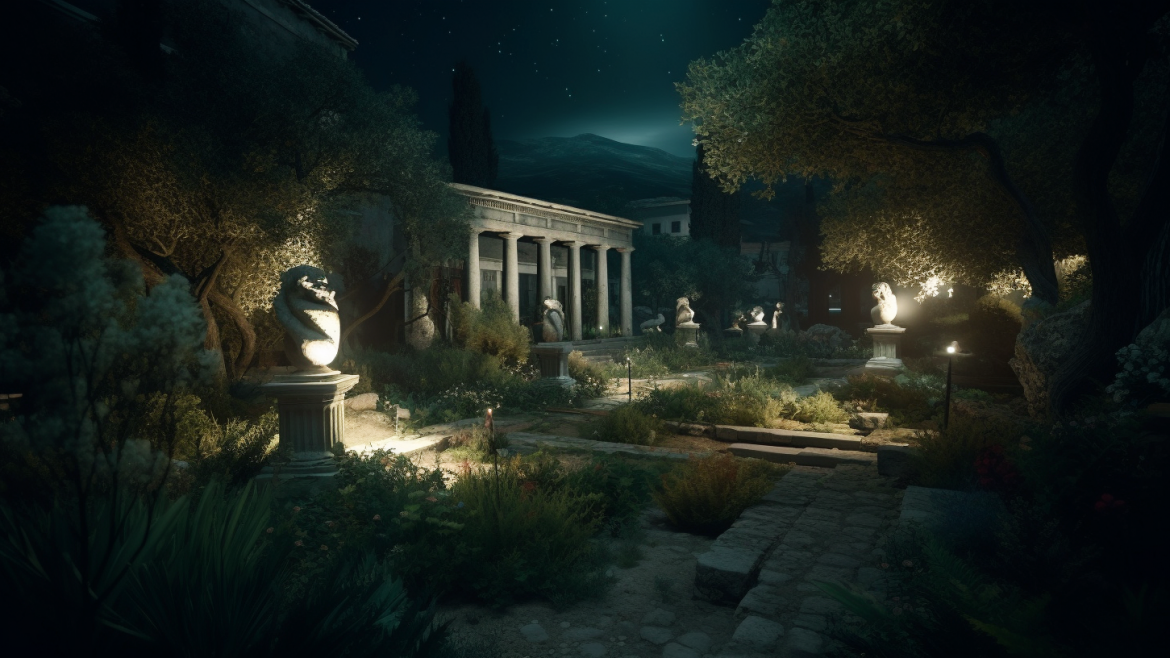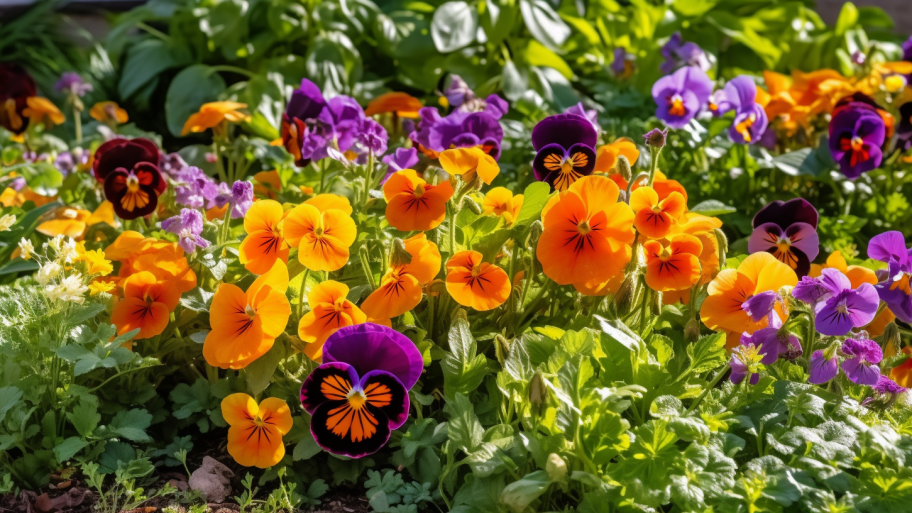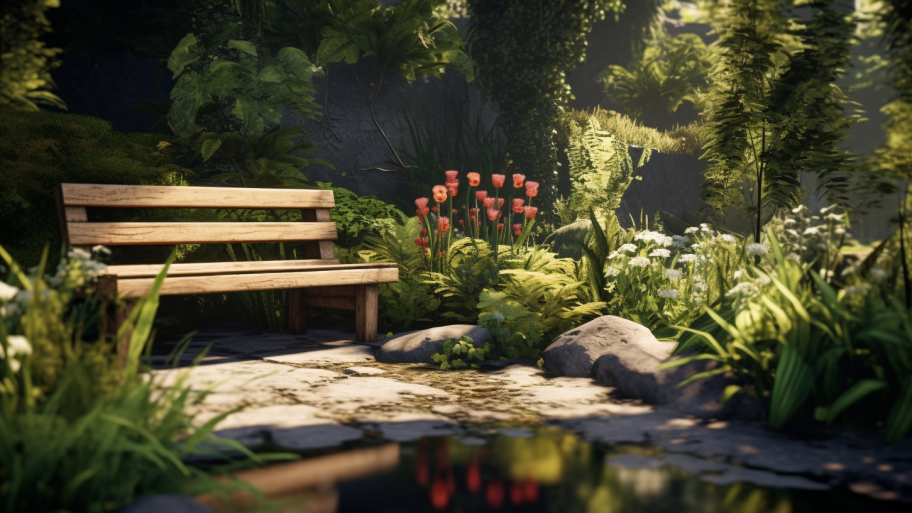Ancient Greek gardens were much more than just functional spaces for growing plants; they were an integral part of daily life, serving as places for relaxation, reflection, and social gatherings. Greek garden design and layout were characterized by an emphasis on harmony, balance, and aesthetic beauty, reflecting the broader cultural values of ancient Greece.
Greek gardens often featured a variety of spaces, including shaded walkways, open courtyards, and secluded corners for contemplation. These spaces were typically defined by the use of colonnades, walls, and hedges. The gardens were designed to engage all the senses, with fragrant flowers, rustling leaves, and the sound of trickling water from fountains or nearby streams.
One of the key aspects of Greek garden design was the use of geometry and symmetry. Gardens were often laid out in square or rectangular patterns, with walkways and planting beds arranged in a grid-like formation. The central axis was a common feature, with paths leading to focal points such as statues, fountains, or ornamental trees.
Ancient Greek gardens also emphasized the integration of indoor and outdoor spaces. Homes were designed around a central courtyard, or peristyle, which served as the primary garden area. This open-air space was surrounded by colonnades, providing a seamless connection between the interior rooms and the outdoor garden.
In addition to their aesthetic beauty, Greek gardens also had practical functions. They often contained a variety of edible and medicinal plants, as well as plants used for fragrance and dye production. Here is a list of specific plants from Ancient Greece that could be grown in modern gardens:
- Olive tree (Olea europaea) – A symbol of peace and prosperity, prized for its oil, wood, and leaves.
- Grapevine (Vitis vinifera) – Cultivated for wine production and its association with Dionysus, the god of wine.
- Bay laurel (Laurus nobilis) – An evergreen tree with aromatic leaves used for cooking and in wreaths to honor victors.
- Rose (Rosa spp.) – A popular ornamental plant with fragrant flowers, used for perfumes and decoration.
- Myrtle (Myrtus communis) – An evergreen shrub with aromatic leaves and flowers, associated with Aphrodite, the goddess of love.
- Hyssop (Hyssopus officinalis) – A medicinal and culinary herb with blue, purple, or white flowers.
- Iris (Iris spp.) – A perennial plant with striking flowers, often used for decorative purposes.
- Saffron crocus (Crocus sativus) – A flowering plant prized for its valuable saffron threads, used as a spice and dye.
- Asphodel (Asphodelus spp.) – A perennial plant with tall spikes of white or yellow flowers, often associated with the afterlife in Greek mythology.
- Cyclamen (Cyclamen spp.) – A low-growing plant with heart-shaped leaves and unique, nodding flowers.
By incorporating elements of ancient Greek garden design and layout, as well as some of the plants native to this era, modern gardeners can create an outdoor space that evokes the beauty, harmony, and cultural richness of ancient Greece. In the next series of articles, we will explore key aspects of gardening in ancient Rome.




